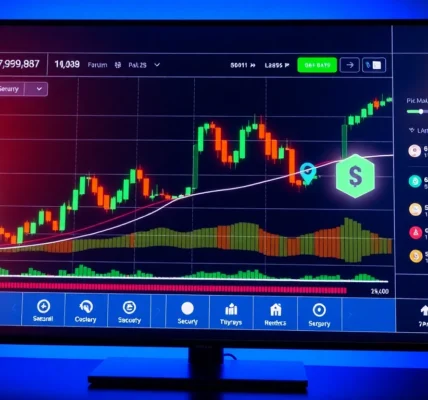Analyzing the Current Nationwide House Price Trends in the UK
Historical Overview of UK Nationwide House Price Fluctuations
The UK housing market has experienced notable fluctuations over the past few decades, shaped by economic cycles, government policies, and demographic shifts. Historically, house prices have shown periods of rapid growth, especially during the 2000s, followed by sharp declines after the 2008 financial crisis. Since then, the market has seen a gradual recovery, with annual growth rates typically fluctuating between 1% and 7%. Notably, the period leading into 2025 has been characterized by resilience despite economic uncertainties, with recent data indicating a steady, modest increase in prices. According to the latest Nationwide House Price data, the average house price is set to climb by approximately 3% in 2025, reflecting a cautious optimism from industry analysts.
Long-term trends reveal that UK house prices tend to outperform inflation, making property a preferred asset class for both investors and owner-occupiers. Understanding these historical patterns helps stakeholders anticipate future movements and strategically position their investments.
Factors Influencing Recent Price Rises and Dips
Several intersecting factors have contributed to the recent stabilization and incremental rise in UK house prices. Among these, low interest rates have historically stimulated demand by making borrowing more affordable, even as mortgage rates fluctuated. However, recent developments include a slight uptick in mortgage interest rates—albeit still low compared to historical averages—which influences affordability.
Another critical factor is the supply shortage. The Royal Institution of Chartered Surveyors (RICS) describes the housing shortage as ‘dire,’ exerting upward pressure on prices due to an imbalance between supply and demand. Tight Planning regulations and slow zoning approval processes exacerbate the issue, constraining new housing development.
External economic factors, such as the global economic climate, inflation rates, and government policies, also heavily influence price dynamics. Money laundering, for example, has artificially inflated prices in certain markets like London, adding approximately £3,000 to average property values nationwide. Additionally, the potential introduction of new property taxes could impact purchase affordability and investment attractiveness.
Regional Variations and Market Hotspots in UK Property Prices
UK house prices are far from uniform across regions. London and the South East continue to lead in appreciation, driven by high demand, international investment, and limited land supply. Conversely, northern regions and some Midlands areas have experienced more modest growth or stabilization.
According to recent reports, approximately 11 metropolitan areas are most vulnerable to a downward correction of 20% or more from their recent peaks, emphasizing the importance of region-specific market analysis. Areas like Manchester, Birmingham, and Edinburgh present opportunities due to their strong economic fundamentals, yet caution is advised in markets that exhibit signs of overvaluation.
Understanding regional nuances is crucial for investors. Strategic entry in hotspots with sustainable growth prospects or those poised for recovery can optimize long-term returns while mitigating risks.
Connecting Nationwide House Price Trends to Mortgage Rate Movements
How Rising House Prices Affect Mortgage Interest Rates
Rising house prices can influence mortgage rates mainly through increased demand for borrowing. When property values increase, lenders perceive a higher collateral value, often leading to greater confidence in lending. Consequently, this can result in a reduction of interest rates or a broader array of competitive mortgage products—assuming other macroeconomic factors remain stable. Recently, the “effective” mortgage interest rate has declined to approximately 4.28%, marking the fifth consecutive monthly decrease, a sign that lenders are still attempting to stimulate borrowing despite rising prices.
However, as the property market heats up, lenders may tighten requirements to mitigate risk, potentially raising qualifying thresholds for borrowers. This interplay emphasizes the need for homebuyers to stay informed about pricing trends and mortgage rate fluctuations to secure the most advantageous terms.
Impact of Declining House Prices on Mortgage Lending Policies
Conversely, if house prices decline significantly, lenders could adopt more cautious or restrictive lending policies. Lower collateral values increase the risk of negative equity and default, prompting lenders to tighten credit standards, increase deposit requirements, or raise interest rates to offset risk exposure. A notable example would be a regional correction due to economic downturns or oversupply, which could discourage borrowing and stall market activity.
It is essential to monitor national and regional price movements; a sustained dip may lead to reduced mortgage approval rates or fewer product options, impacting both homebuyers and investors.
Forecasting Mortgage Rate Changes Based on Nationwide House Price Forecasts
The close relationship between house prices and mortgage rates suggests that future rate trends can be partly inferred from predicted price developments. If growth slows or reverses, lenders may respond by tightening lending criteria, leading to higher borrowing costs. Conversely, continued moderate growth supports competitive rates and robust loan offerings.
Industry forecasts indicate that if the UK maintains its expected 3% increase in house prices for 2025, mortgage rates are likely to remain relatively stable or decline marginally as lenders seek to attract borrowers in a competitive environment. However, unexpected economic shocks or policy shifts could disrupt this balance.
Implications for Homebuyers and Investors in 2025
Strategies for Securing Favorable Mortgage Rates Amid Price Changes
Homebuyers aiming to lock in the best mortgage rates should prioritize early application processes and consider fixed-rate deals, which offer stability against potential rate hikes. Given the current environment, percentage of borrowers opting for two-year fixed products (around 46%) suggests a preference for short-term security. Additionally, maintaining strong credit scores, minimizing debt, and saving larger deposits are proven methods to achieve lower rates.
Investors should also explore remortgaging options as rates decline, capitalizing on lower interest costs to improve cash flow and profitability. Consulting with financial advisors and mortgage brokers who keenly monitor market trends can help tailor strategies aligned with evolving price and rate trajectories.
Long-Term Investment Considerations Influenced by Nationwide House Price Trends
In a market expected to rise modestly, long-term investors may focus on properties with strong regional fundamentals, potential for appreciation, and rental demand. The UK rental market, particularly in growth cities, remains resilient, offering opportunities for steady income streams. Tapping into areas with infrastructure projects or employment hubs can further enhance capital growth prospects.
Historical data confirms that seasoned investors diversify portfolios across regions and property types to mitigate risks associated with market fluctuations. Holding assets through market cycles and leveraging long-term trends can maximize wealth accumulation.
Risk Management for Property Investors in a Fluctuating Market
The key to navigating a fluctuating property market is robust risk management. This includes conducting comprehensive due diligence, stress-testing potential scenarios, and maintaining liquidity to capitalize on market corrections. Staying aware of policy changes—such as proposed new taxes—can prevent surprises.
Also, maintaining flexible financing options and locking in competitive mortgage rates during downturns can safeguard margins. Diversification strategies—investing in different regions or property sectors—reduce exposure to localized downturns and help stabilize income streams.
Key Policies and Economic Factors Shaping the Market
The Effect of Government Housing Policies on Nationwide House Prices
Government initiatives such as the Help to Buy scheme, stamp duty adjustments, and planning reforms significantly impact house price dynamics. Recent discussions around new property taxes and potential restrictions on foreign investment could temper price growth or even induce corrections in specific markets. Furthermore, policies aimed at increasing housing supply, like relaxing planning restrictions, seek to address the ‘dire’ shortages that currently fuel price increases.
Strategic policy shifts will dictate the growth trajectory in 2025, with an emphasis on balancing affordability with supply to prevent overheating.
Interest Rate Policies and Their Influence on Mortgage Affordability
The Bank of England’s monetary policy directly affects mortgage interest rates. With recent rate cuts in hopes of stimulating market activity, mortgage rates have edged downward, encouraging borrowing. However, the potential for future rate hikes due to inflation pressures or economic recovery could reverse this trend, impacting affordability.
Keeping abreast of Bank Rate movements and central bank signals is vital for optimizing timing and structuring of mortgage agreements.
Global Economic Trends Impacting UK Property and Mortgage Markets
UK property markets are not insulated from global developments. Inflationary pressures, geopolitical tensions, and international capital flows can influence domestic mortgage rates and house prices. For instance, rising global interest rates could prompt UK lenders to tighten lending criteria, even if local economic conditions remain stable. Conversely, economic resilience, as seen in sectors like student housing, can stabilize demand and prices.
Therefore, investors and homebuyers must consider macroeconomic indicators alongside local trends to make informed decisions.
Practical Steps for Navigating the UK Property Market
Monitoring Nationwide House Price Data for Investment Timing
Regularly reviewing the latest Nationwide House Price data empowers investors to identify optimal entry and exit points. Tools such as monthly reports, regional analyses, and trending price movements help refine timing strategies, whether for purchase, remortgaging, or selling.
Additionally, subscribing to industry alerts and leveraging real-time analytics can provide a competitive edge.
Choosing the Right Mortgage Products in a Rising Price Environment
Selecting appropriate mortgage products is crucial when prices are escalating. Fixed-rate mortgages offer protection against future rate increases, while variable or tracker deals may benefit from current low rates if rates decline further. Comparing lender offers, understanding product features like early repayment charges, and considering the loan-to-value ratio are vital.
Experts recommend securing pre-approval to strengthen negotiation positions and locking in favourable rates early in the price cycle.
Partnering with Financial Advisors for Personalized Property Strategies
Engaging with experienced financial advisors or mortgage brokers can help tailor strategies aligned with individual financial goals amid evolving market conditions. Professionals can analyze personal circumstances, recommend suitable loan types, and forecast market trends to optimize returns.
Building a strong advisory relationship ensures ongoing support as the market fluctuates, especially in a complex and dynamic environment like the UK property sector.




